What Awaits on the Other Side : Migration and Displacement in Society
By Kaizerin Lungnie Tanzil

There is an undeniably strong relationship between people and places. Like trees planted in soil, we grow and deepen our roots wherever we reside. But alas, our roots do not prevent us from moving and being moved, as even the biggest of trees are sometimes uprooted from their habitat.
From the 23 short films that comprise this year’s Southeast Asian Short Film selection, a number of them touch on the subject of displacement within the society. Among these are the films Elephants in the City by Dam Quang Trung, The Men Who Wait by Tru’o’ng Minh Quý, and A Man Trembles by Mark Chua and Lam Li Shuen. Though they take on different approaches and styles towards the subject matter, the themes that are conveyed within them seem to resonate with each other.
I.
Elephants in the City starts its narrative with a curious yet honest question asked by one of its characters: “I just wondered how people can take these big elephants all the way from Africa to here. How is it possible?” Despite there being no explicit explanation to the mystery, the characters in the scene concluded the question with the belief that the elephants are better off in the zoo than in their own natural habitat, since at the very least they could escape being hunted down. This little anecdote not only becomes a parallel of humans and the migration of individuals from their respective land, but also invokes a discussion on the weight and worth of the displacement itself. Is a better life guaranteed for those who dare to leave their home?
Instead of dabbling further on the matter, the film posed the question against the lives of not only one, but several people within a factory in the city. Most of these workers came to the city from rural areas in hopes of a better economic opportunity. Though they are strangers to one another, their lives are intertwined by a single common thread: in varying ways, the city and their work has become their “enclosure”, much like the zoo have been to the elephants.
In the zoo, the elephants live in captivity. They are enclosed within a small space and are unable to fend for themselves as resources are controlled and limited by the establishment. They may have escaped the threat of persecution, but in exchange they have become fully dependent and impotent, living only to the extent of what is allowed by those in power. It isn’t a coincidence that this unpleasant truth is used to start the film, as it is difficult to disregard the similarity of the elephant’s fate to that of an individual in a capitalistic society.
Rivers in rural areas were filled to build roads for urbanisation. Individuals leave their homes and family for hard labor that barely pays enough. Exhausted workers take turns to sleep atop a pile of factory-made jeans. Stocks of perfectly fine goods are being disposed of, and workers are encouraging each other to steal them. To top it all off, some of them have only a small living space to stay in. All of these may attest to the wheel of capitalism in motion. Struggling to survive from paycheck to paycheck, these workers are at the mercy of their underpaid wage and are taken advantage of in their vulnerability, just like the situation of the elephants in the zoo.
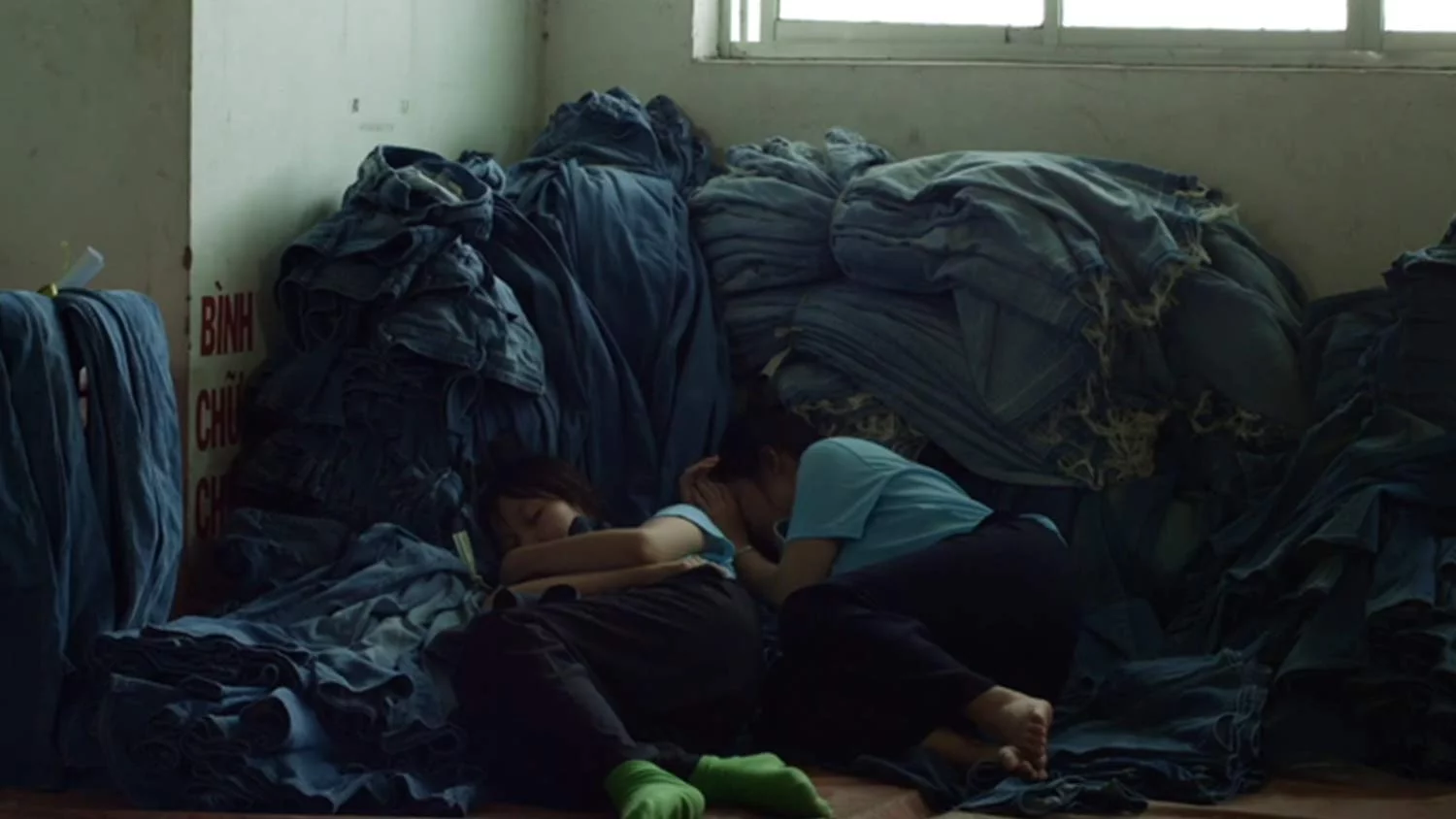
Grounded in realism and simple story-telling, the narrative made it easy to believe that somewhere out there, at this very moment, somebody is living a life much alike to these fictional ones that we see on screen. As a result, the film serves as a reflective piece that provides a mirror for the humble reality of our society.
II.
In The Men Who Wait, two men are seen cruising at a slag heap turned hiking trail. While doing so, a third man watches quietly from the distance. Immediately, it feels as if there is a line drawn between the two men and the watcher. Though they are standing on the same grounds, they appear to be living very different lives.
Both parties may be part of a marginalized society that can’t fulfill their needs back where they are from. However, there seems to be a difference that is dependent on the fact that the two men could come and go from the grounds as they please, while the watcher does not possess such liberty. With a yellow make-shift tent in the distance in one of the scenes and seen trudging through the dirt with his water jugs in others, it is assumed that the third man has made the slag heaps his home. This is later confirmed as he proclaims to himself in what presumably is his native language, Bambara: “I arrived here alone. My home is far away. I will never return.” Unlike the men who could walk home to their houses in the city, the outlander lacks such luxury. While the couple gets to fulfill their innate desires, the Malian man has to labor just to obtain his basic needs.
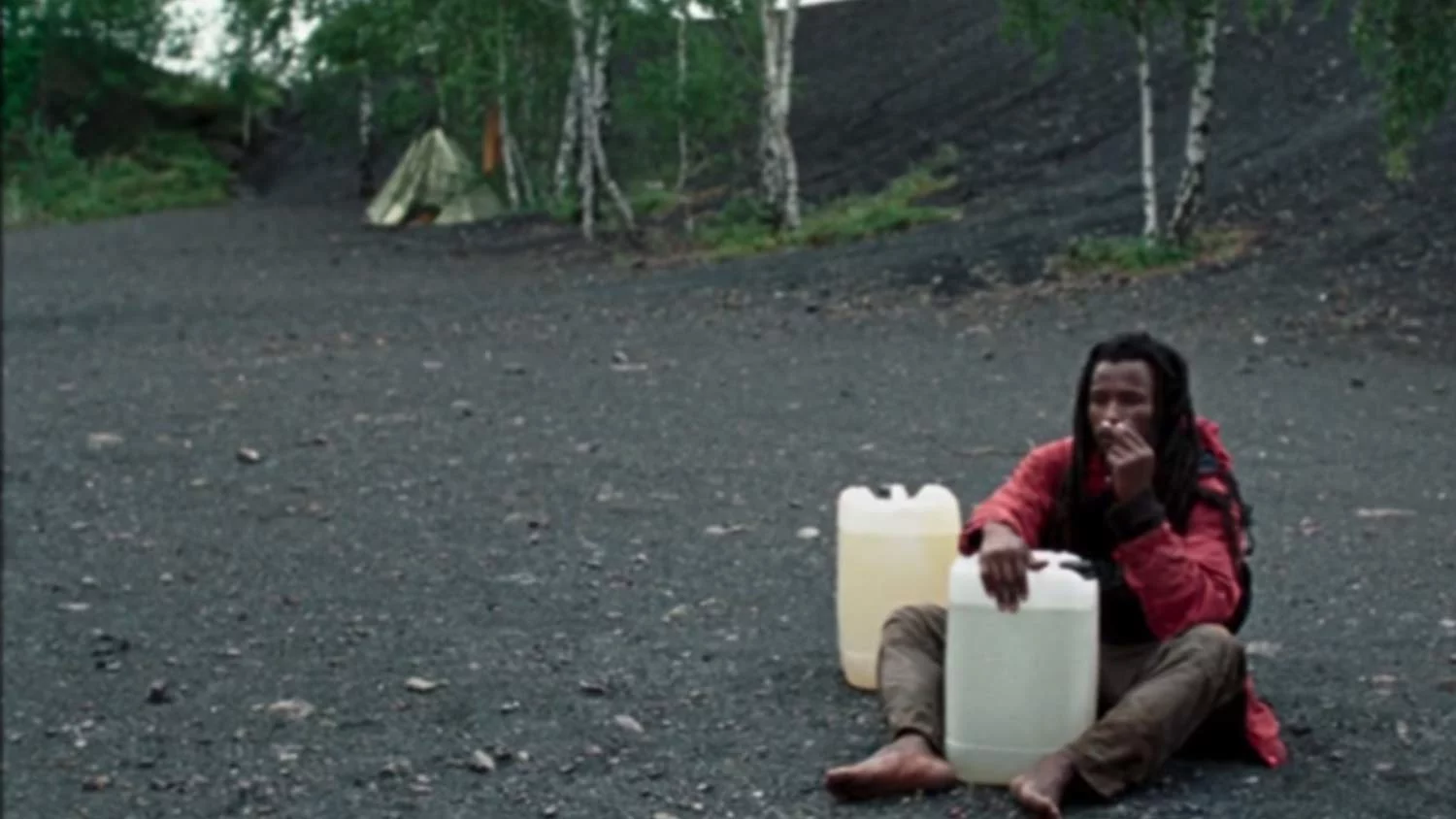
The slag heap itself as a location seems to be a character. Decorating this setting are the trails left behind by the dragging of the water jugs, the imprint of the Malian man’s hand on the dirt, and even the smallest chip on the bark of a tree barely the size of a fingernail. The piece seems to highlight the marks we leave behind by existing and living, and how the grounds where we stand remembers and records our feats. Perhaps in a way, the labors of the Malian man are reminiscent of what many migrants like him had to do on those very same grounds before him. Though the slag heap is no longer the mine it used to be, history will always remember.
Compared to the first film, The Men Who Wait takes a more poetic approach to its style, with use of slow motions and visible attempts of emphasizing the mood and atmosphere of the moment. The sound design adorns the visual with careful attention to the noises within the frame and amplifies them. Accompanying the couple’s narrative are the therapeutic sounds of leaves rustling in the wind as well as tactile sounds of skin-to-skin contact, as made apparent especially when one of the men brushes dirt off his partner’s back. For the Malian man, we hear the splashing sounds of water trapped in a container and jugs being dragged across the dirt. This attentiveness to the emotion and mood within the scene helps in making the piece contemplative and introspective.
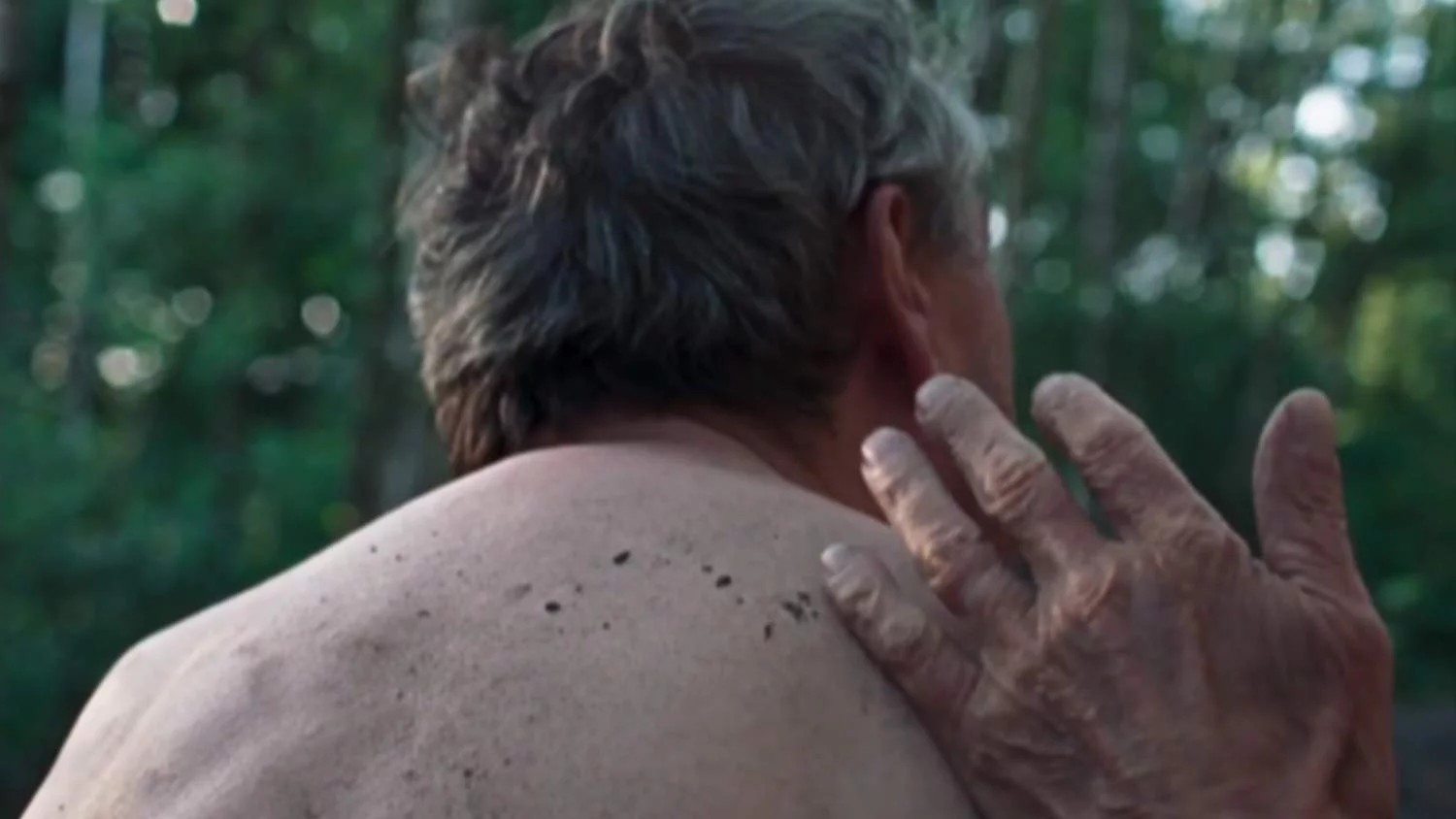
III.
While both Elephants in the City and The Men Who Wait portrays the aftermath of displacement, A Man Trembles sheds light on the attempt of the migration itself. However, migration here is neither internal nor transnational, rather it is “otherworldly”. The film pushes the narrative of the absurd and incorporates sci-fi as well as horror elements in its storytelling. Set against the backdrop of the Asian Financial Crisis, the film tells of a family who makes a deal with a mysterious entity to escape earth once and for all.
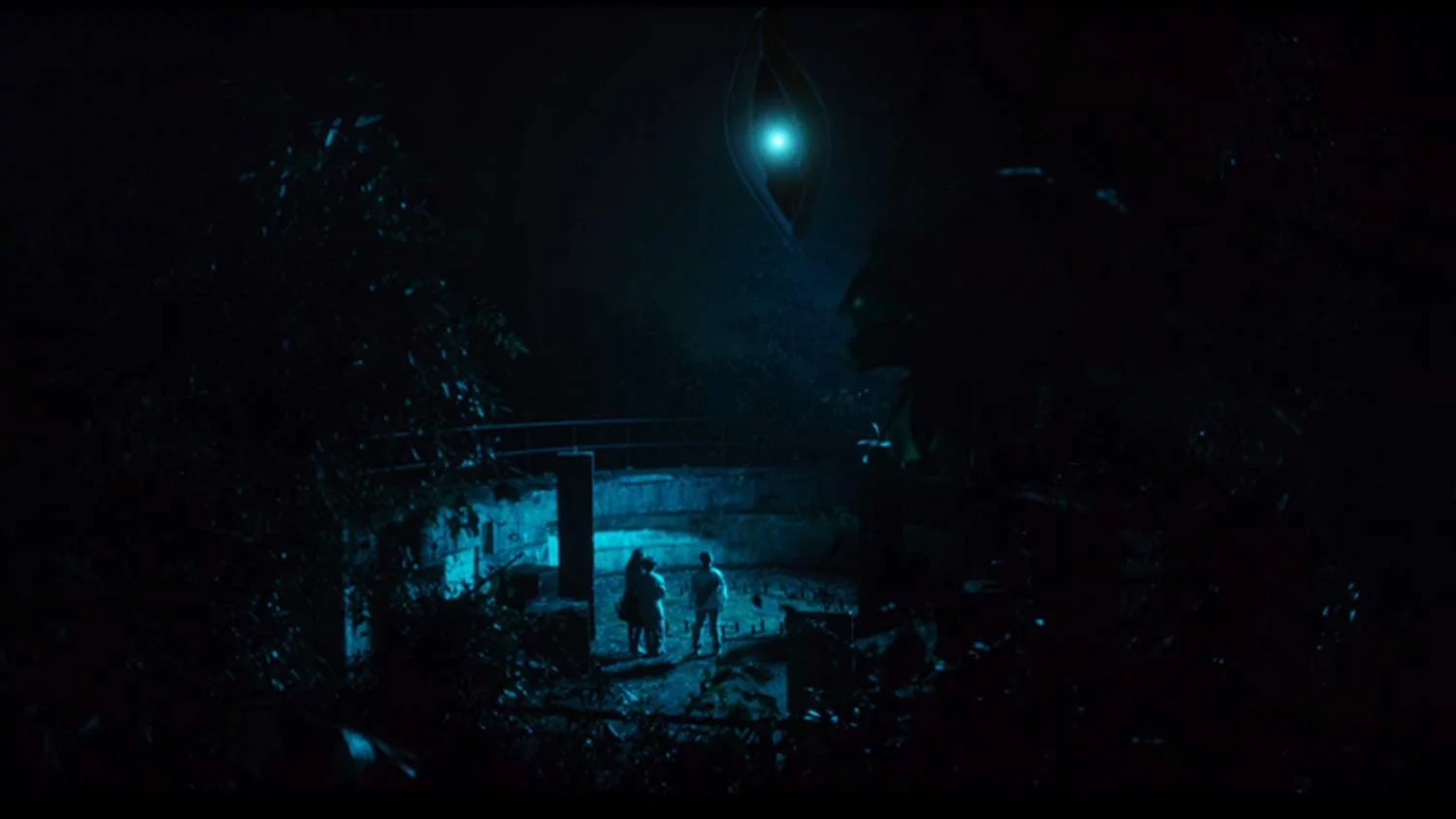
In reality, it is well understood that the thought of making such a decision is absurd and unrealistic, even. However, by taking such extreme and surreal measures, the film was able to put emphasis on the gravity of the situation and one’s desperation in the face of it. Migration becomes the sliver of light at the end of a tunnel that hopefully would lead them to a better life, but as the story unfolds, it is revealed that escape might be illusory after all.
In the final scenes of the film, the family went to meet the entity to be picked up, though they are cautious and uncertain. Their foreboding is later justified when the bright light of the unidentified object starts to cause them immense pain. Panicking and injured, the man scrambles to run, leaving his family behind to save his own life. The unidentified object produced whirring noises and strobing lights that allowed us to catch brief glimpses of the man, running away in the otherwise pitch-black night. Along with his relentless screams and pants that resemble that of a prey in fear of its life, both the visual and audio of the scene works together to bring an unsettling intensity to the film. In the end, not only is escape portrayed as illusory, it also proves to be harmful.
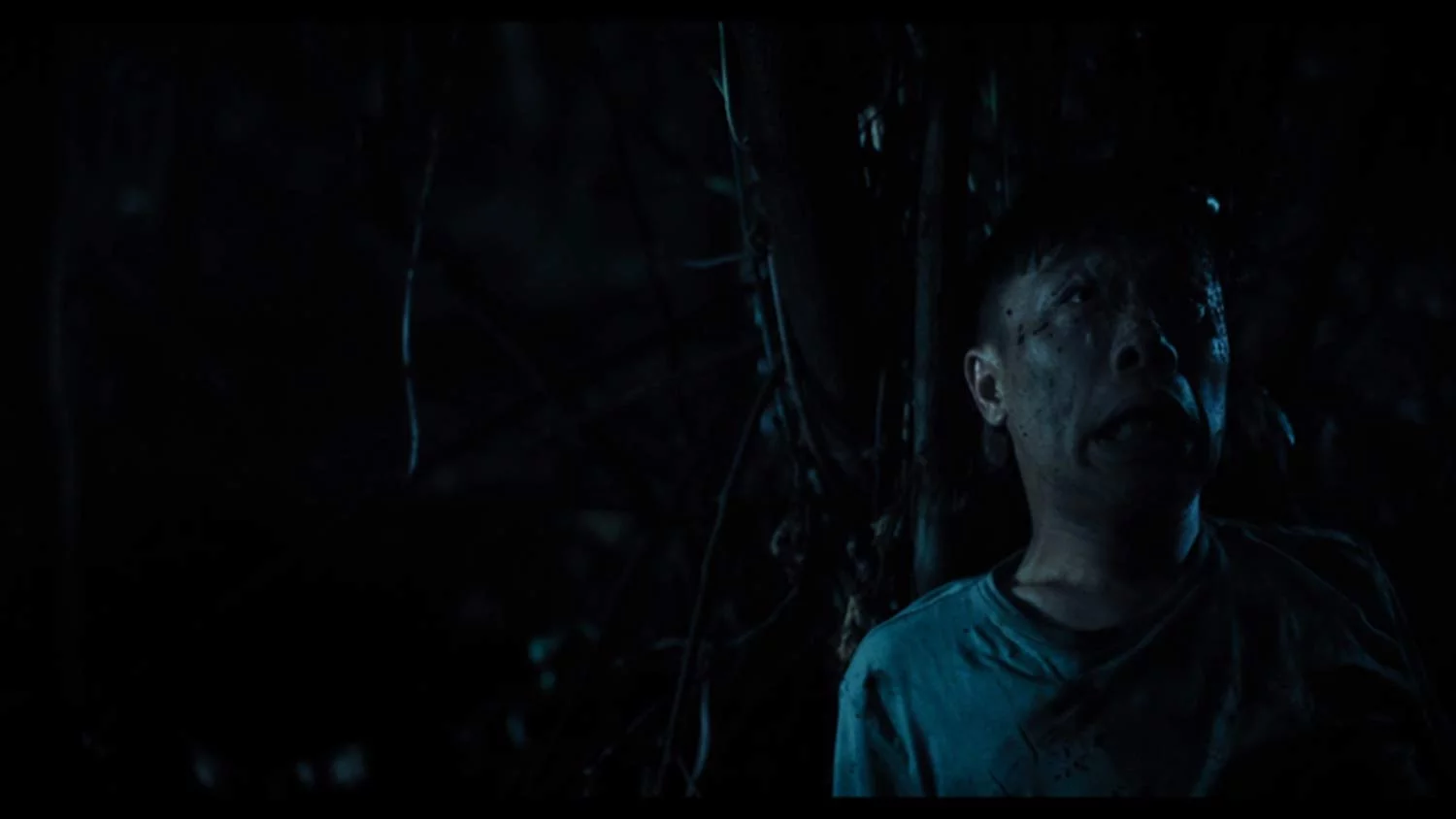
IV.
In the ever changing world we know today, displacement, migration, and urbanisation seems to be more common than ever. It is true that unlike what most hoped for it to be, leaving one’s home may not always guarantee an easy path to a better life, as made apparent in the three films that have been discussed. The issue of an unbefitting standard of living for many people placed in such situations is pertinent and will continue to be. However, we must acknowledge that the efforts made to try and pursue a better life even despite obstacles may be a testament to the human spirit and persistence to survive.